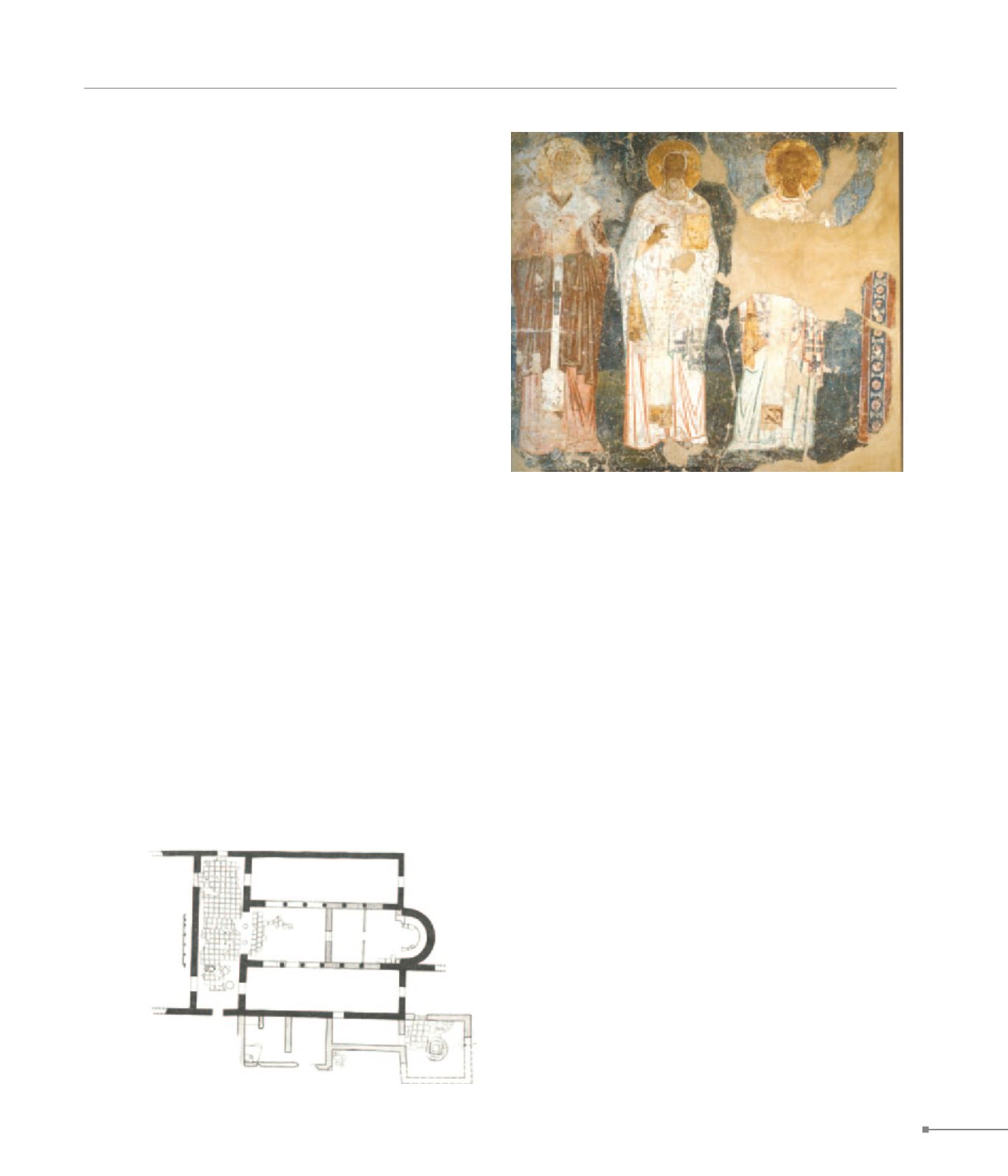
Oropos.
Stamata.
CENTRAL GREECE
189
235. Oropos, Saint George, wall-painting (Ωρωπός, Άγιος Γεώργιος,
τοιχογραφία)
235.
Oropos.
The most significant monument in the Oropos area is the ruined
church of Saint George, a three-aisled, timber-roofed basilica
featuring colonnades with pointed arches. The wall-painting
decoration, parts of which have been removed and are exhib-
ited in the Athens Byzantine Museum, dates from the first dec-
ades of the 13th c. The cross-vaulted church of Saint Nicholas
and the church of Aghioi Apostoloi, an aisleless church with
tripartite bema, and two arcosolia with Gothic frames on the
inside, date from the years of Frankish rule.
236.
Kalamos.
The church of Saint Nicholas at the Kalamos cemetery is a rare
example of the three-aisled, cross-vaulted church with narthex
variation. It dates from the 13th c. and in its narthex retains parts
of excellent wall-paintings of the late 13th c., associated with the
decoration of Saint George of Omorphokklesia at Galatsi.
237.
Marathon.
Marathon seems to have hosted one of the first organised
Christian communities in Attica, as indicated by the presence
of the local bishop at a synod in the 4th c. No Early Christian
building remains have been detected so far, however. Accord-
ing to hymnographic sources the worship of Aghios Flegon in
the region is attested to in the 9th c. The narthex of the Forty
Martyrs church at Oenoe is considered a building of the 12th c.,
featuring on its façade two large and carefully built arches with
porous voussoirs. In the same region survives almost intact a
Frankish quadrilateral tower of the typical form occurring in the
Attica countryside.
238.
Parnetha.
On the slopes of Mount Parnetha that face the basin and the re-
gion of Menidi there are three Post-Byzantine churches. Aghia
Triada, catholicon of the Post-Byzantine Aghia Triada monas-
tery, located at an altitude of about 1,000 m, is a cross-vaulted
church with a blind arcade on the interior side walls and a later
narthex. Judging by the layer of wall-paintings, sculpted com-
partments and masonry elements, the narthex dates from the
Late Byzantine period. At Saint Nicholas at Petra, Varymbobi,
a layer of wall-paintings (13th c.) was revealed after an earth-
quake in 1999. Saint John Prodromos (or Nistikos) at Menidi is
a small, four-columned, cross-in-square church with degraded
exterior due to later interventions. Restoration works have re-
vealed wall-paintings dating to the late 13th c.
239.
Stamata.
In the Stamata area a three-aisled, Early Christian basilica, dat-
ing from the late 5th-early 6th c., with narthex and annexes,
including a baptistery, has been excavated. Possibly in the
11th c., part of the nave was reconstructed and operated as a
church. E of the apse a built twin cist tomb with painted decora-
tion and significant grave goods has been found, dating from
the 6th c.
239. Stamata,
basilica,
ground plan
(Σταμάτα,
κάτοψη
βασιλικής)


